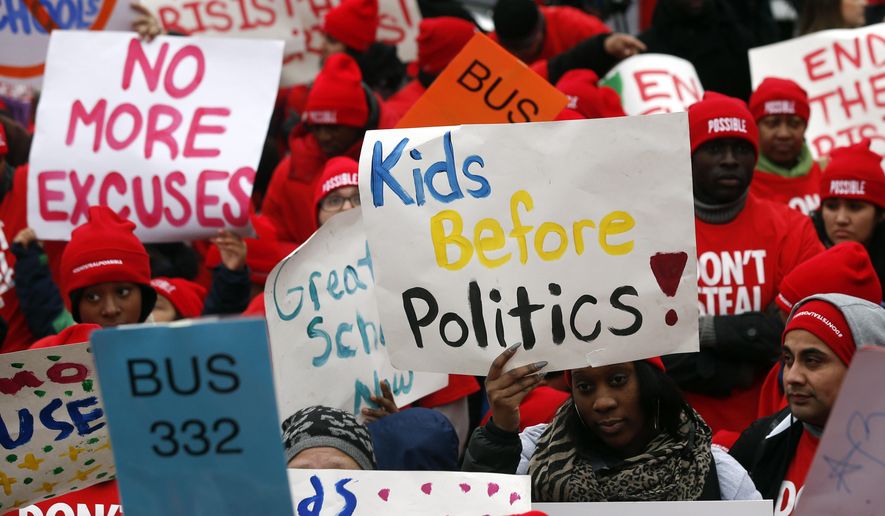OPINION:
Analyzing the education system in the United States reveals some sobering statistics. According to the US News & World Report, about 20% of college freshmen nationwide entering four-year colleges are placed into remedial English and Mathematics courses. That number nearly triples to approximately 60% when looking at community colleges.
Remedial courses are defined by the National Center for Education Statistics (a part of the US Department of Education’s Institution of Education Sciences) as “courses for students lacking skills necessary to perform college-level work at the degree of rigor required by the institution.” Thus, students who are not appropriately equipped to complete entry-level courses at the beginning of their college careers are either encouraged or required to undertake corresponding developmental classes. The National Bureau of Economic Research estimates that the annual cost of remedial coursework hovers around $7 billion nationally.
So how is it that we are graduating students from our high schools and sending a high percentage of them off to college without the sufficient preparation to succeed in college?
It seems that even those who are graduating from our high schools are ill-prepared for that next step in their academic careers. Improving education in our elementary, middle, and high schools is a formidable task that requires the cooperation, creativity, and hard work from many actors. From parents and teachers to administrators and politicians, there is no shortage of whom much is required—but in order to be great, we must expend great energy and effort. There is no doubt in my mind that there have been positive examples demonstrated and frameworks utilized throughout the country when it comes to educating our children.
One of my favorite schools to examine is Success Academy—a network of charter schools in New York City that currently operates 32 schools and serves 9,000 students across four boroughs. The network’s mission is to “Build exceptional, world-class public schools that prove that all children from all backgrounds can succeed in college and life; and serve as a catalyst and national model for education reform and help change public policies that prevent so many children from having access to opportunity.”
While charter schools are able to operate with more independence than zoned schools, they are still held strictly accountable to the state for student performance. Worthy of note is that New York City charter schools are free, public schools open to all children in the state through a random lottery. One of the Success Academy schools (Harlem West) saw 89% of their seventh-graders and 83% of their sixth-graders pass the 2013 New York State Mathematics Test, but only 29% of all sixth-grade public school students in the city passed the same exam.
Moreover, amongst sixth-grade African-American and Latino children in the state, only 15% and 17% passed, respectively. Of Harlem West’s sixth-graders, 97% were African-American or Latino, and 75% of them came from low-income families. In terms of the 2014 state exams, Harlem West ranked 5th out of 1,880 other New York State middle schools in Mathematics and 30th in English Language Arts.
Much of the achievement seen across Success Academy schools can be attributed to their emphasis on internal assessments and as well as their longer school days. The educators at Harlem West have the power of an extended school day, as the school doors open at 7:30am and dismiss at 5:10pm, providing students with 7.5 more instructional hours per week than the city’s traditional district schools.
As those hours accumulate to an extra 74 days per year, students at Success Academy will have received the equivalent of two additional years in the classroom by the end of 8th grade. Within those hours, weekly classroom observations and follow-up appointments allow teachers to reflect on the areas where they can improve their instruction. Moreover, all Success Academy principals and teachers dedicate the entire month prior to the first day of class to intensive professional development and training sessions where educators carefully master techniques and content.
I am not suggesting that there should necessarily be more charter schools throughout the country, but rather that we should be trying to emulate all states’ top-performing schools. Traditional district public schools should be privy to the same techniques and try to adapt similar teaching requirements that we see amongst successful schools, regardless of the teacher evaluation systems implemented by their various districts.
While we sit here and wait for said evaluation systems to be formally decided upon and legitimately implemented from place to place, our students succumb to environments where their educators are unsure of how to execute their jobs due to confusing standards—both academic (for their students) and professional (for themselves). Let’s hope that we can come together to fix the problems that surround our educational institutions, or else we are prone to see an increase in those remediation rates.
Alfonso Costa Jr. is a graduate of Yale and Oxford universities and will be matriculating at Harvard Law School this fall. He currently serves as the Director of Policy Research and Social Capital for USA First Political Action Committee.




Please read our comment policy before commenting.